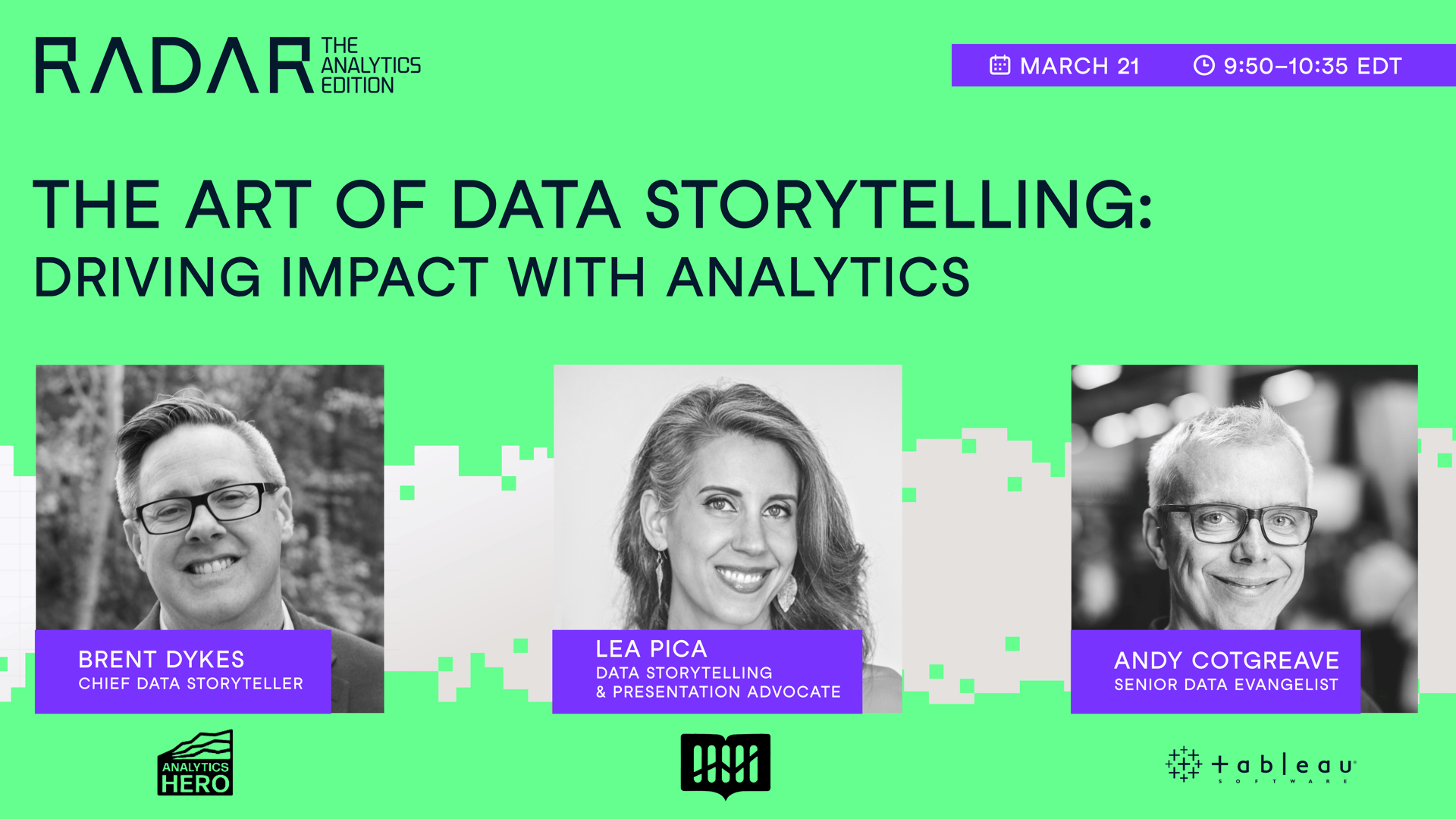Skip to main contentFor Business





Speakers

Brent Dykes
Senior Director of Insights and Data Storytelling at Blast Analytics


Andy Cotgreave
Senior Data Evangelist at Tableau
Training 2 or more people?
Get your team access to the full DataCamp library, with centralized reporting, assignments, projects and moreRelated
webinar
The Art of Data Storytelling: Driving Impact with Analytics
In this session, three industry leaders will shed light on the art of blending analytics with storytelling, a key to making data-driven insights both understandable and influential within any organization.webinar
Radar Data & AI Literacy Edition: From Insight to Impact with Data Storytelling
In this session, join Gary Wolf, Lea Pica and Jason Forrest as they delve into the world of data stories and how they play out in our lives.webinar
RADAR: The Analytics Edition - From Data Governance to Data Discoverability: Building Trust in Data Within Your Organization
In this session, industry leaders share strategies for improving data quality, fostering a culture of trust around data, and balancing robust governance with the need for accessible, high-quality data.webinar
RADAR: The Analytics Edition - Building a Learning Culture for Analytics Functions
In the session, Russell Johnson, Denisse Groenendaal-Lopez and Mark Stern address the importance of fostering a learning environment for driving success with analytics.webinar
RADAR: The Analytics Edition - Scaling Data ROI: Driving Analytics Adoption Within Your Organization
In this session, Laura Gent Felker, Tiffany Perkins-Munn, and Omar Khawaja will explore best practices when it comes to scaling analytics adoption within the wider organization.webinar
RADAR: The Analytics Edition - Opening Session: A Tipping Point in Data Democratization
In this session, Jonathan Cornelissen, CEO at DataCamp, will unpack how we are at a tipping point in data democratization, and how individuals and organizations can succeed with analytics in an AI-driven world.Join 5000+ companies and 80% of the Fortune 1000 who use DataCamp to upskill their teams.
Loved by thousands of companies
